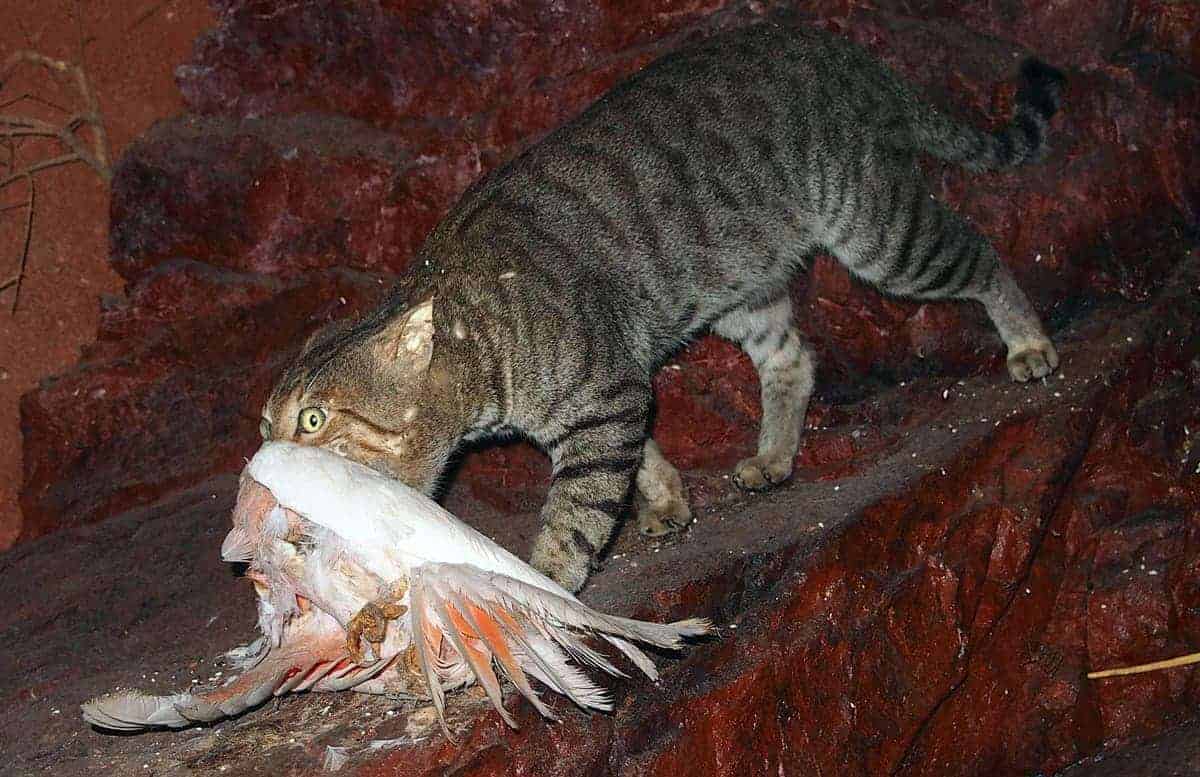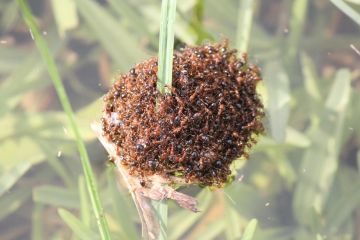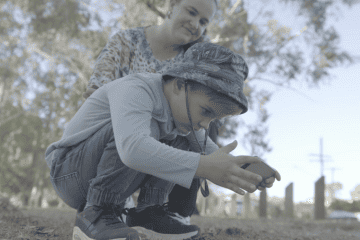The Invasive Species Council is warning that the latest detection of fire ants on the Sunshine Coast is its most significant yet and a signal that the area might be harbouring many more undetected nests.
Unlike earlier isolated finds, the new nest in Baringa is located close to the sites of previous nests, indicating a broader, more entrenched infestation than previously thought.
‘This is alarming. The frequency of new Sunshine Coast detections raises the spectre that fire ants have escaped the northern containment boundary, risking large-scale infestation,’ Invasive Species Council Advocacy Director Reece Pianta said.
‘We are calling for an urgent, rapid surveillance blitz, focused on auditing high-risk sites, similar to a surveillance program deployed in northern NSW, to evaluate the scale and severity of the infestation and ensure funding and resources are available to address the Sunshine Coast fire ant inferno.
‘This surveillance project should also trigger an urgent national funding review led by the federal government to ensure resources match the scale of the threat.
‘The latest detection follows a string of other outbreaks across south east Queensland in recent months – many linked to building and construction sites, in materials like soil, mulch and turf.
‘These nests probably slipped through biosecurity zone cracks 6 to 12 months ago. Some can be traced directly back to delays in funding in 2022–23, which meant eradication activities took at least a year longer to get started compared to the southern and western borders.
‘There is a high risk that undetected nests will start to spread locally through queen flight or budding and once this process starts, fire ant infestations can quickly grow out of control.
‘Repeat detections are a clear sign that a well-resourced winter blitz is essential to uncover unknown nests before they spread in the warmer months, when ants begin to fly, spread and multiply.
‘Community can play a role – checking your backyard, neighbourhood park and footpaths. But this should be supported by council checks on high-risk sites, transport corridors and an increased tracing and compliance focus from state-run fire ant programs.
‘This is a national biosecurity emergency unfolding right in front of us. We urgently need the Albanese Government to step up, match Queensland’s $24 million suppression funding boost and commit to the full ongoing eradication program.
‘This is not just a Queensland issue. If fire ants escape the current containment zone, they will spread across the country, devastating agriculture, threatening public health, and damaging our wildlife and way of life.
‘Fire ants are among the world’s worst invasive pests. Their aggressive stings can trigger severe allergic reactions in humans, and they pose a serious threat to pets, livestock, native animals and infrastructure.
‘Every nest we find now is a chance to stop this pest in its tracks. The council and local community need support, resources and personnel to make it happen.
‘We urge members of the Sunshine Coast community to stay vigilant and report any nest sighting to the fire ant program at: www.fireants.org.au.’
Media Inquiries: (02) 8006 5004
Background:
- The nest was reported by a landscaper and confirmed by the National Red Imported Fire Ant Eradication Program on 19 May 2025. It has since been destroyed.
- Fire ants are dark reddish-brown with a darker black-brown abdomen and range in size from two to six millimetres long. Their ant nests are distinctive mounds of loose, crumbly or fluffy-looking soil with a honeycomb appearance, up to 40 centimetres high, with no obvious entrance holes.
- Red imported fire ants can damage electrical and agricultural equipment, sting people, pets and livestock, kill native plants and animals, and damage ecosystems beyond repair.
- A ten-year proposed eradication program has been developed, so far it is only funded until 2027 at $592 million – well short of what is required for full eradication.
- The 2021 National Red Imported Fire Ant Eradication Program strategic review estimated that at least $200 to $300 million per year will be required for ongoing eradication efforts to achieve eradication by 2032.
- Fire ants can be lethal to humans, are expected to exceed $2 billion per year in economic impacts on Australia’s economy and if they get out of control, will devastate wildlife, cut agricultural output by up to 40% and may cause over 650,000 extra medical appointments each year.
- Fire ants can form rafts during flood events, stowaway in freight or soil, or spread by Queen ant flights of up to several km.
- Fire ants came into Australia in the late 90s in freight from the United States, they were found in 2001. Fire ants are originally from South America.
- Fire ants have spread across most of the southern United States, and are spreading in China at a rate of about 80 km per year. Australia has managed to contain fire ants in south east Queensland for 20 years however under-resourcing has prevented successful eradication.
- Almost all of Australia is climatically suitable for fire ants.








